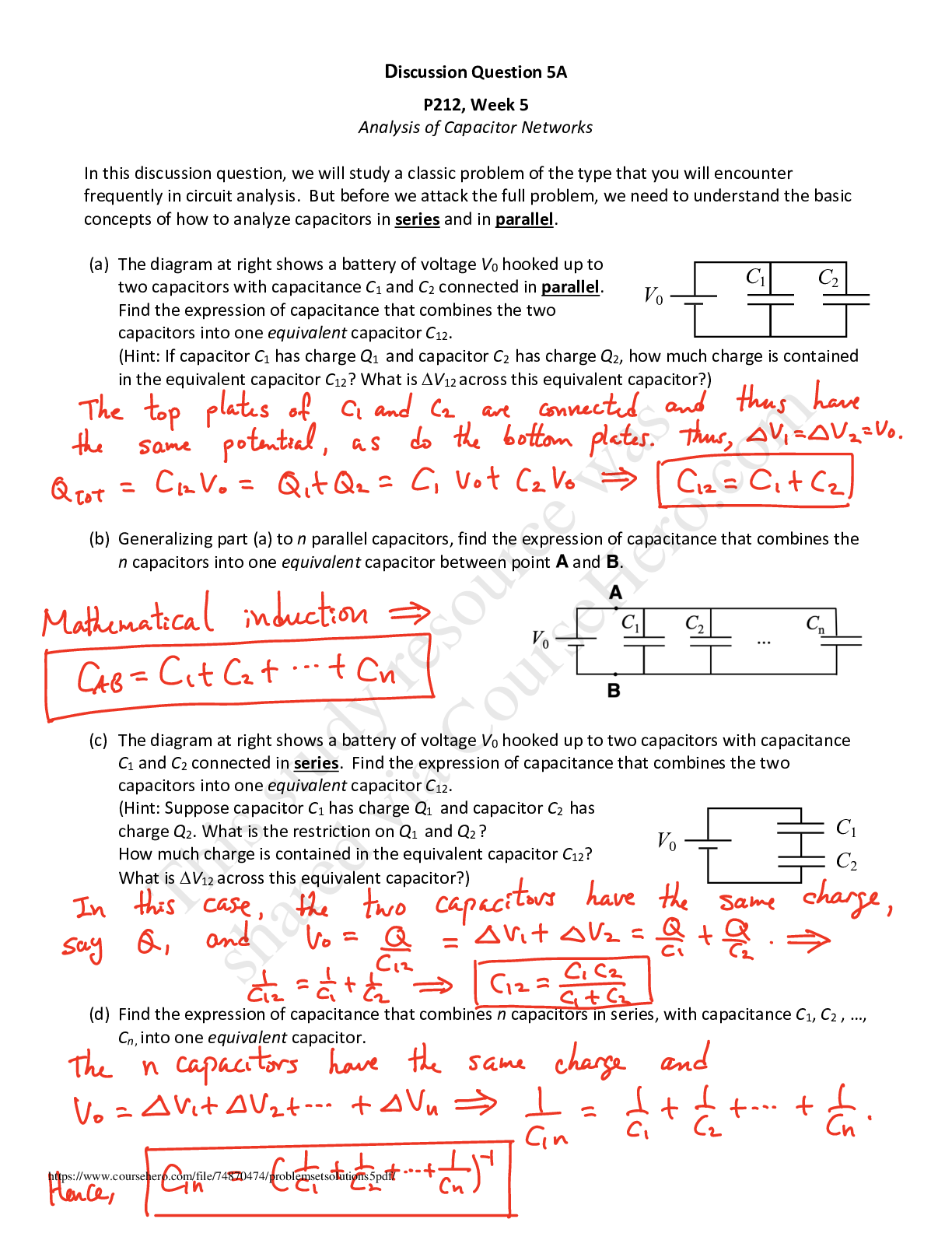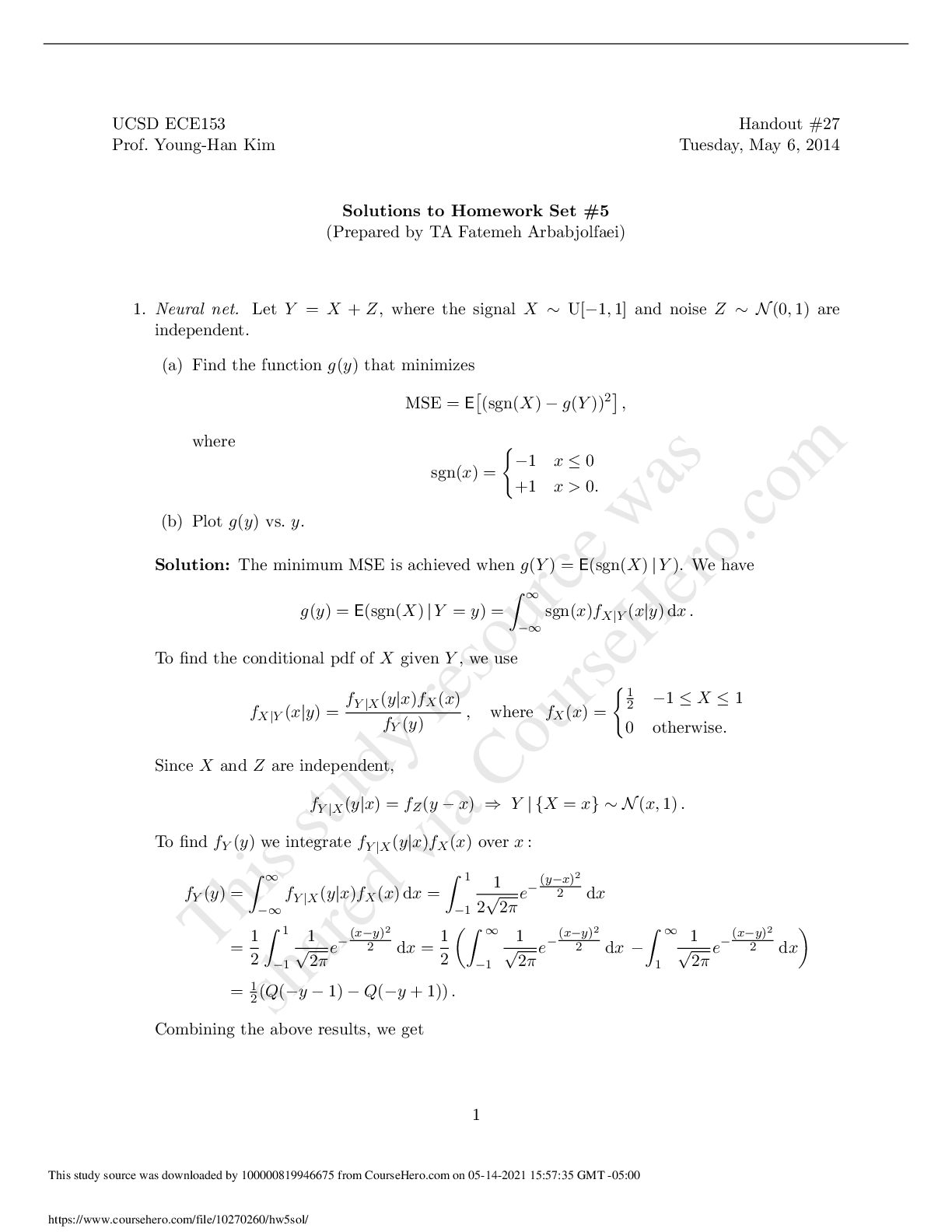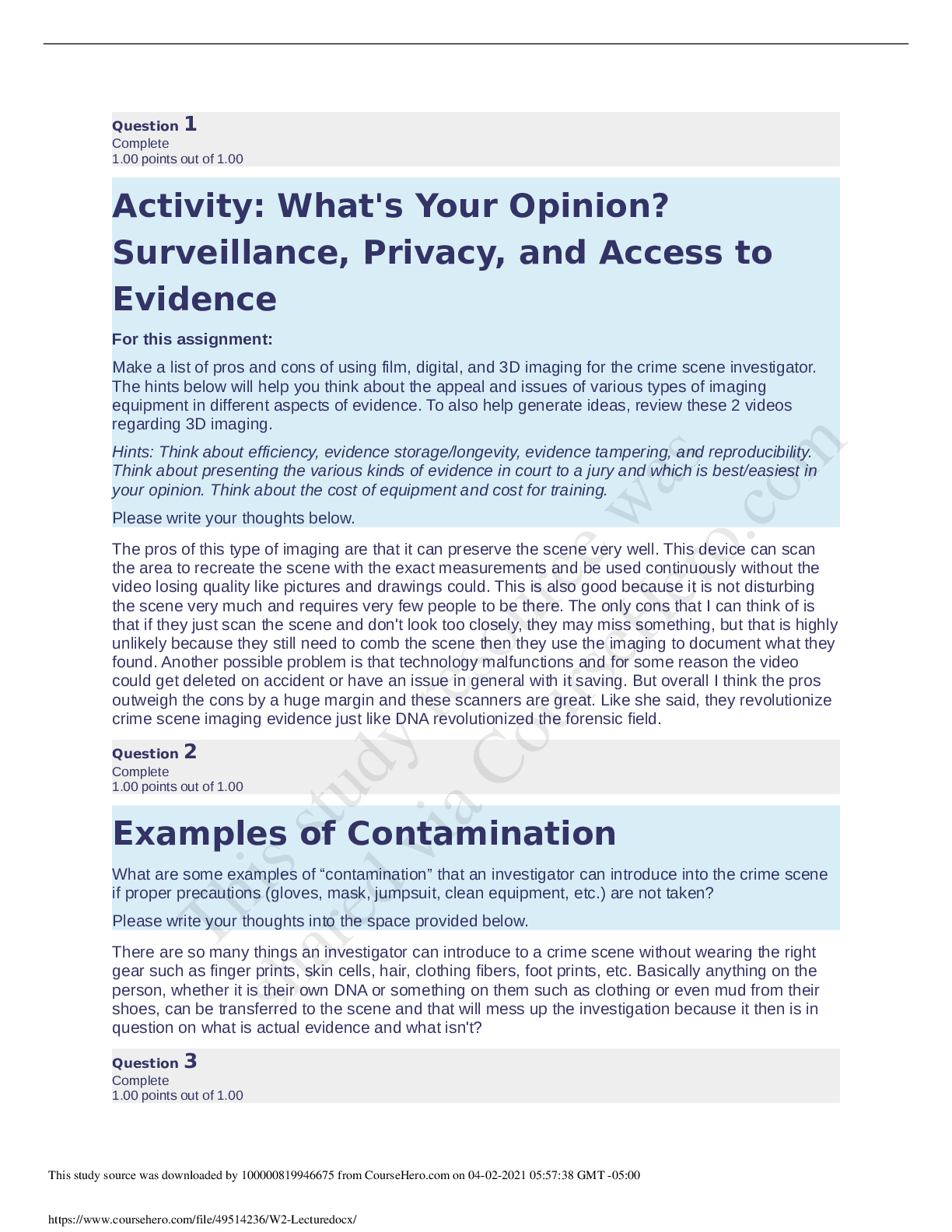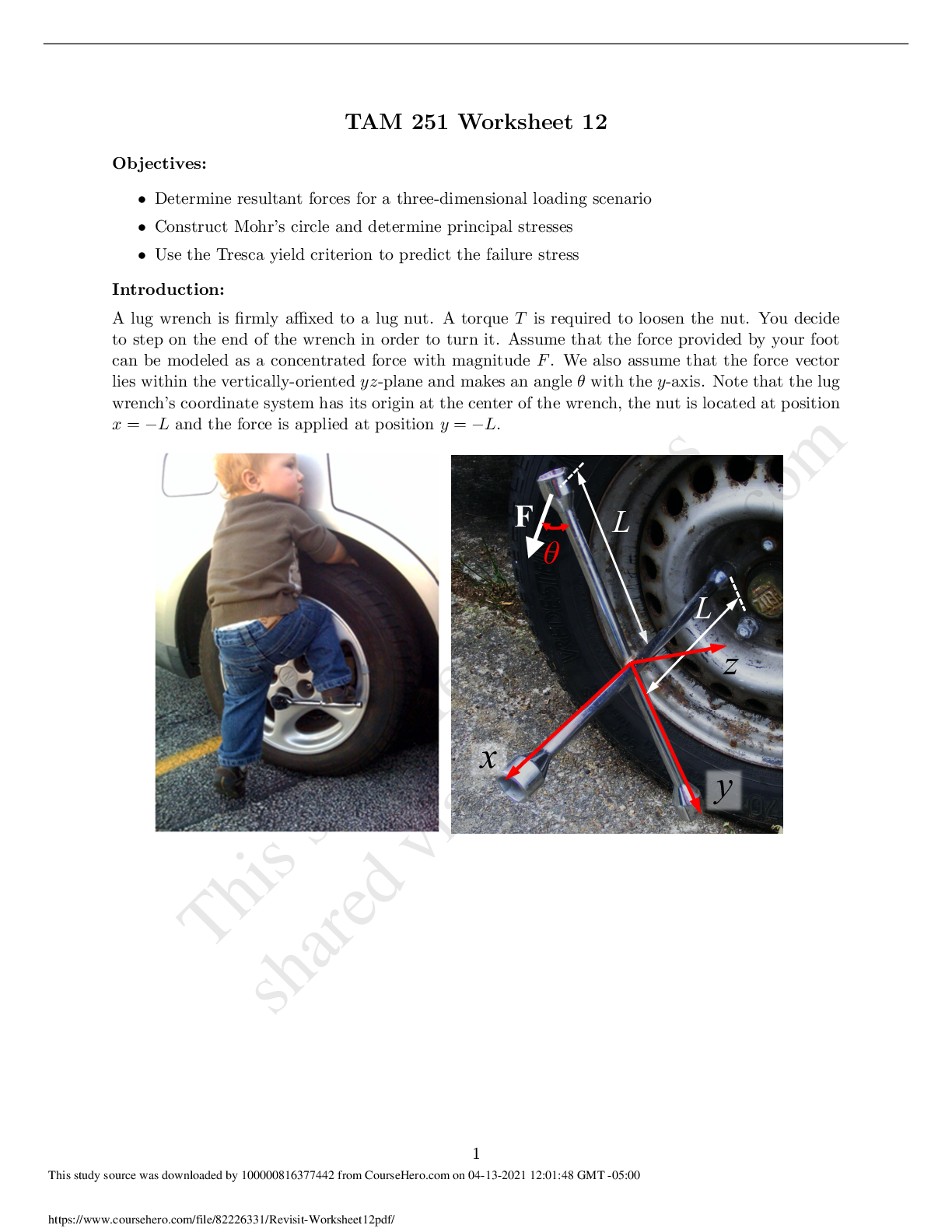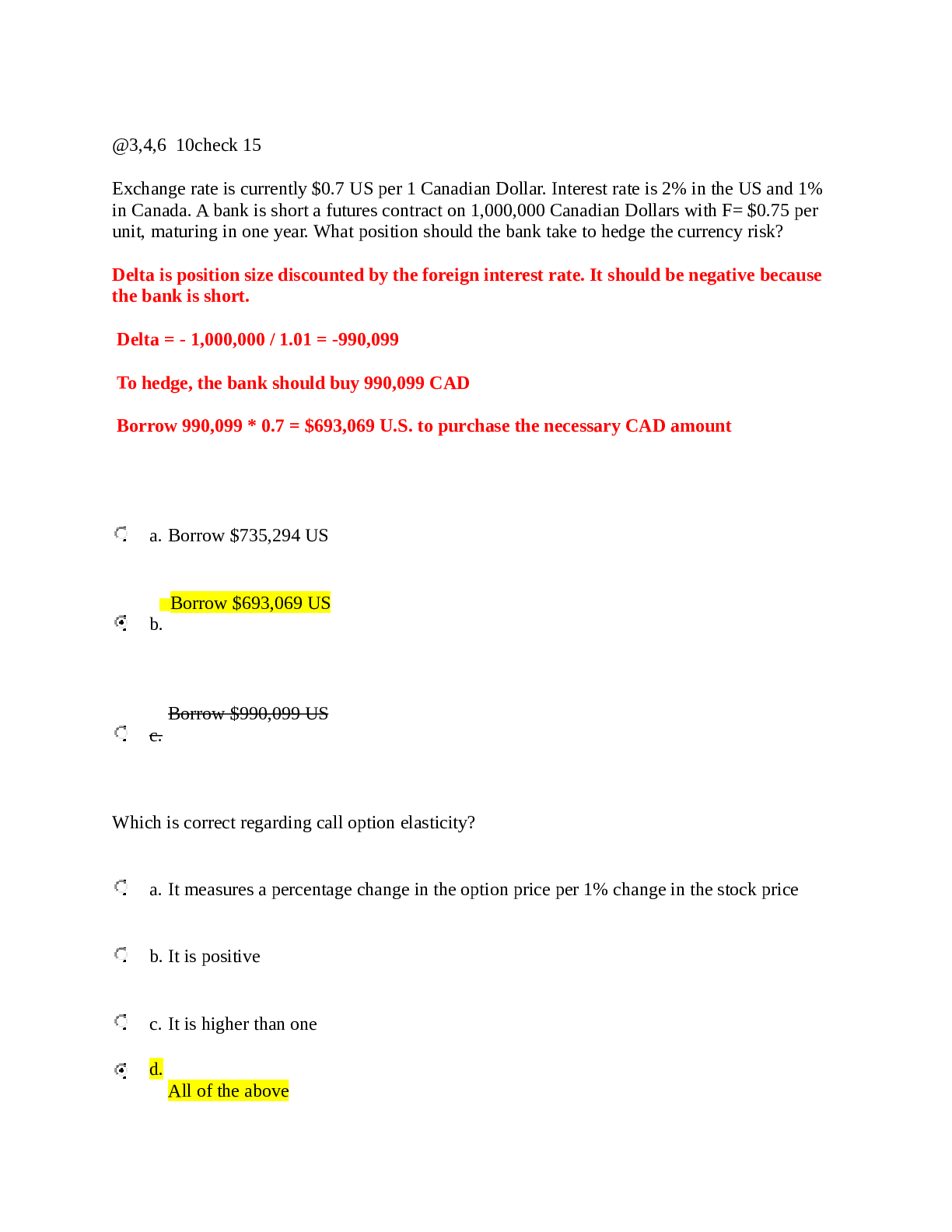Computer Science > QUESTIONS & ANSWERS > ECE/CS 438: Homework 2: Transport Layer, TCP, UDP University of Illinois, Urbana Champaign CS 438 (All)
ECE/CS 438: Homework 2: Transport Layer, TCP, UDP University of Illinois, Urbana Champaign CS 438
Document Content and Description Below
ECE/CS 438: Homework 2: Transport Layer, TCP, UDP Fall 2015, UIUC (I) Write True/False with a brief justification (around 1 sentence): (a) The TCP ACKs consume bandwidth. It would be better if the ... TCP receiver sends NACKs upon receiving out of order (or corrupted) packets. (b) Assume TCP is in the Slow Start phase, with SSThreshold as 32. At some time instant, the congestion window is 16. When the congestion window increases the next time, it will become 32. (c) A TCP socket creates an end to end connection between two devices. (d) The TCP sender has packets 20 to 30 in its congestion window (CW), all waiting for ACKs, when a timeout occurs. The sender will cut down CW to 1 and will gradually retransmit each of these packets. (e) Consider the case where a TCP sender transmits a file to a TCP receiver. A system administrator tells you that during this transfer, no timeout or dupACKs were recorded. In that case, the congestion window during the transfer should have never decreased (i.e., it should either remain same or increase). (h) The lower end of the TCP transmitters window is never greater than the lower end of the TCP receiver’s window. (i) TCP can cope with any amount of losses, and hence, TCP should work without modifications on lossy wireless networks. (j) The selective repeat receiver need not send an ACK if the received packet is less than its lower end of the (current) receive window. (II) Answer the following questions on TCP – refer to Figure 1. Assume slow start, unless otherwise mentioned. Copy the timelines in your answer-sheet and work on them: (a) In Figure 1(a), what are the values of CW at times t1, t2, t3? How should the TCP transmitter react after receiving A3 and A2. (b) In Figure 1(b), assume TCP starts from CW=1. What should CW be at times t1 and t2? How should the TCP transmitter react after the timeout? How should the TCP transmitter react when each of the the last two ACKs (shown in the figure) arrive? (c) In Figure 1(c), what should CW be at time t1? How should the TCP transmitter react upon receiving A13? (d) In Figure 1(d), what should the CW be at times t1, t2, t3, and t4? How should the TCP transmitter react upon receiving each of th [Show More]
Last updated: 2 years ago
Preview 1 out of 2 pages
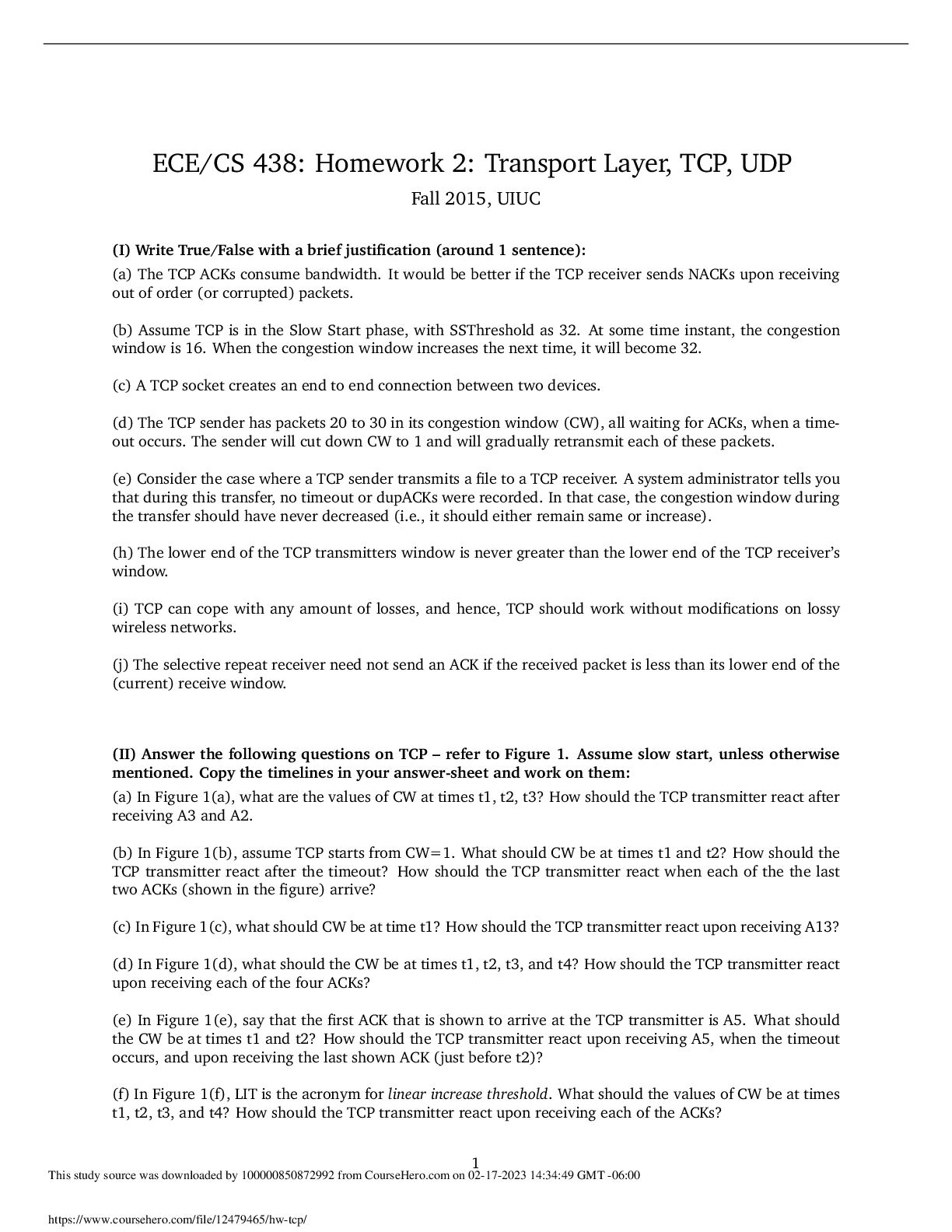
Buy this document to get the full access instantly
Instant Download Access after purchase
Buy NowInstant download
We Accept:

Reviews( 0 )
$7.00
Can't find what you want? Try our AI powered Search
Document information
Connected school, study & course
About the document
Uploaded On
Feb 17, 2023
Number of pages
2
Written in
Additional information
This document has been written for:
Uploaded
Feb 17, 2023
Downloads
0
Views
92

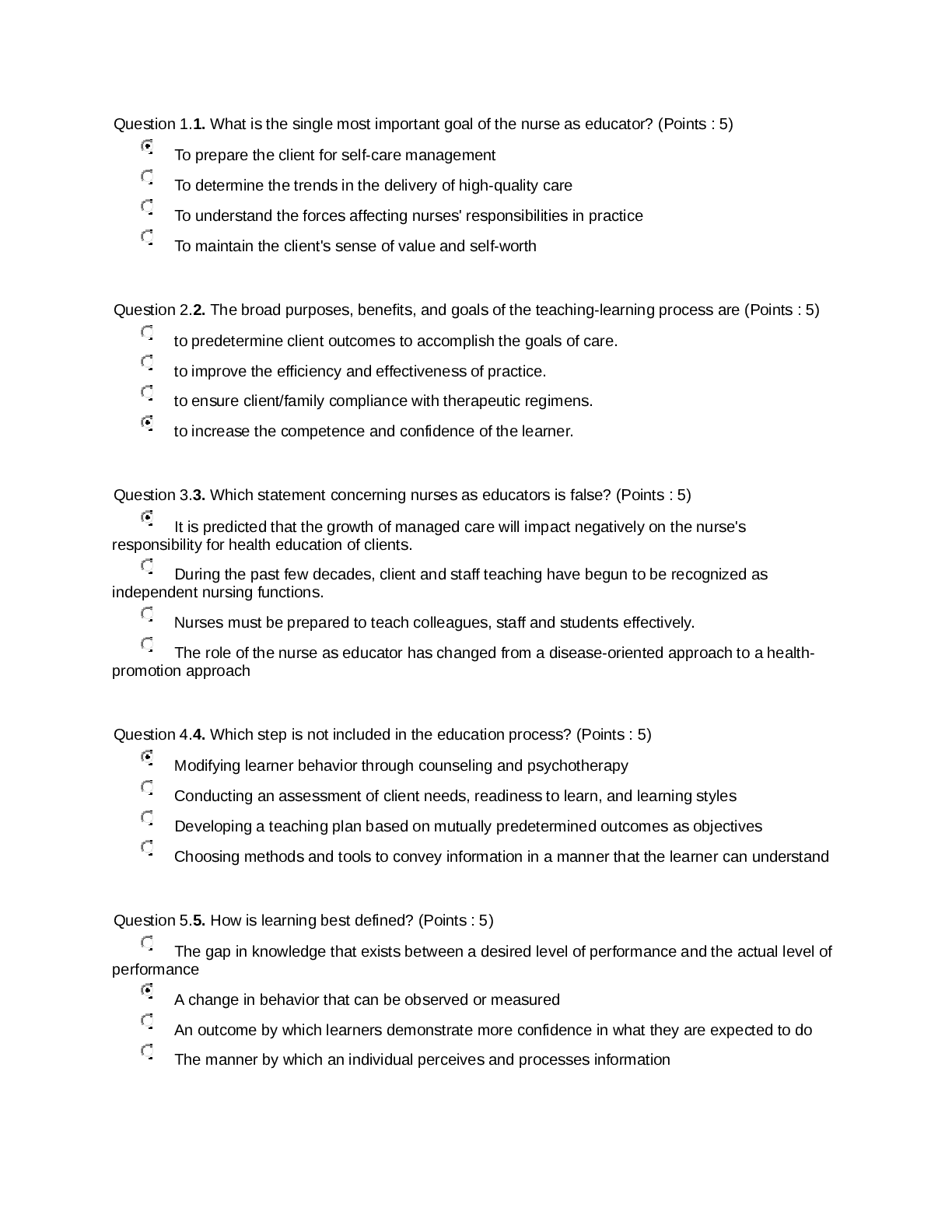
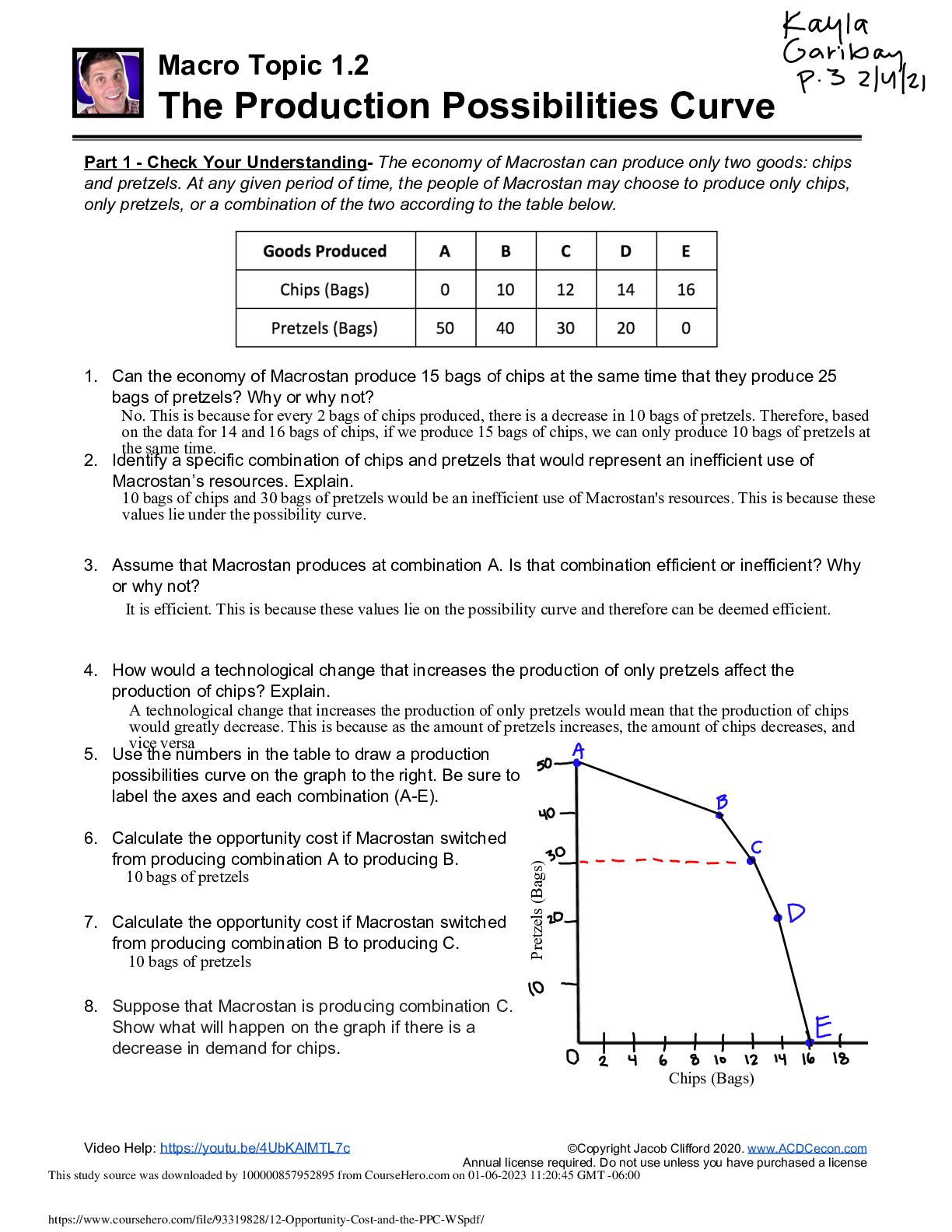



.png)



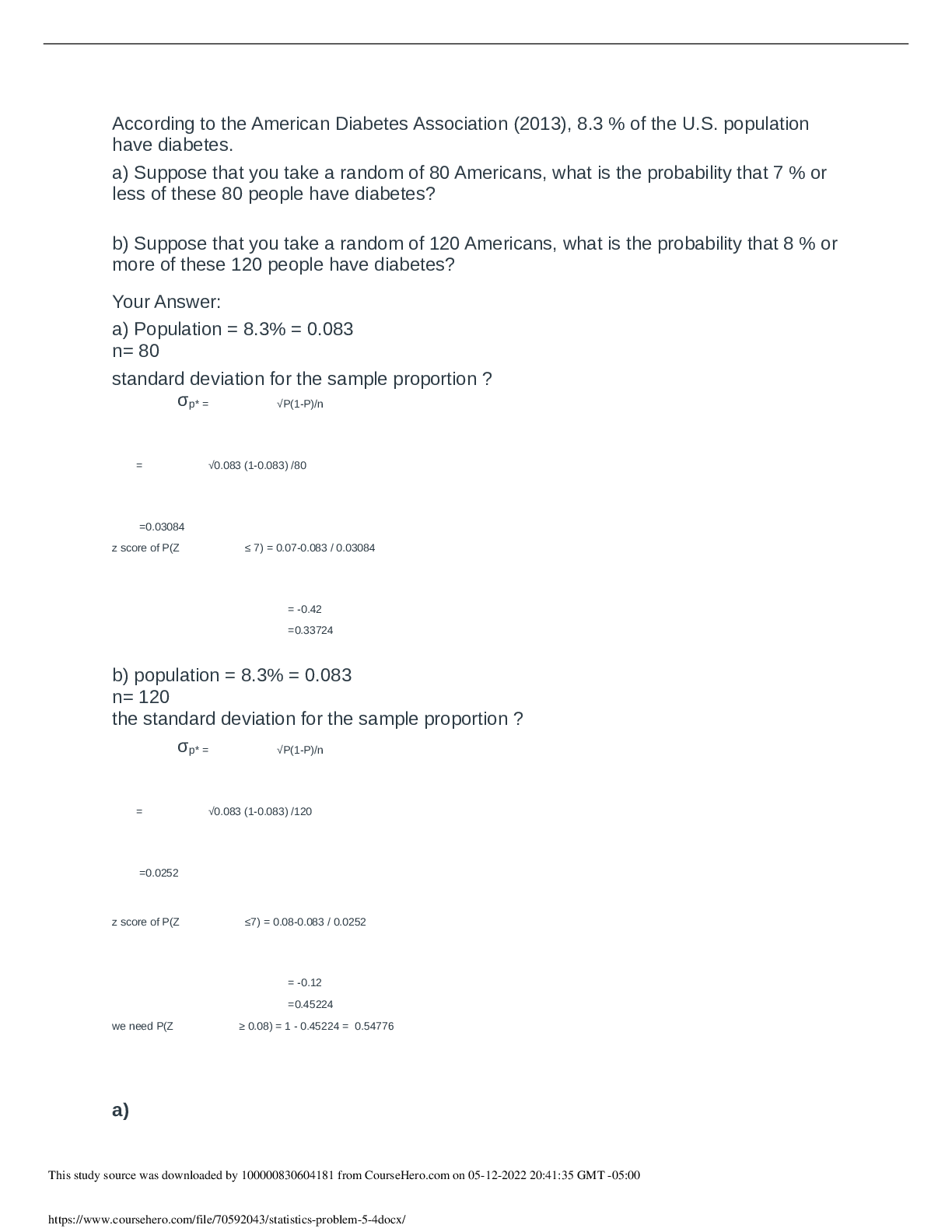
.png)


